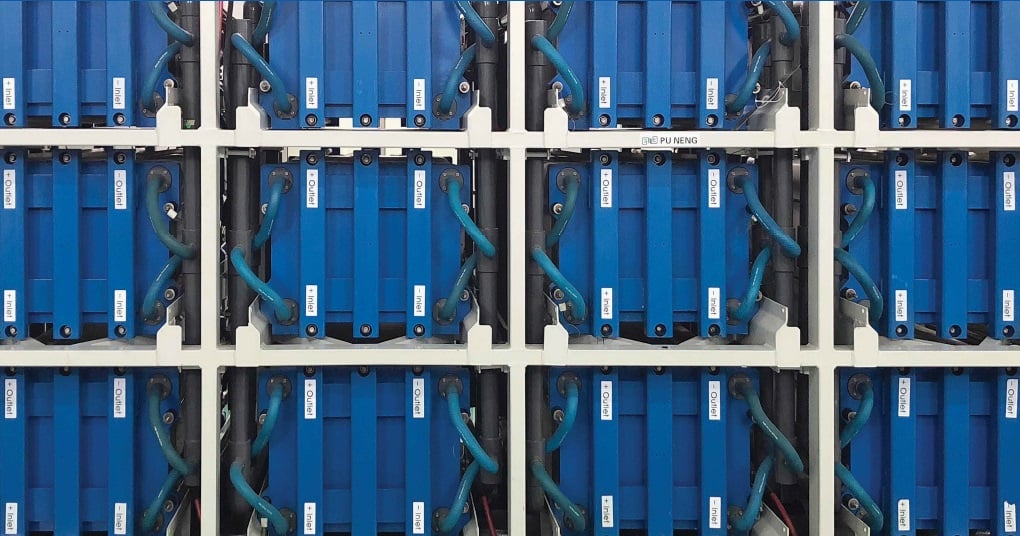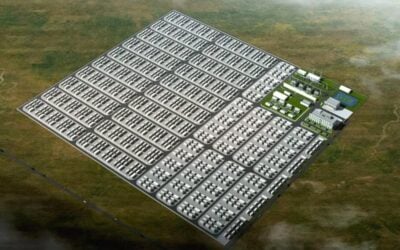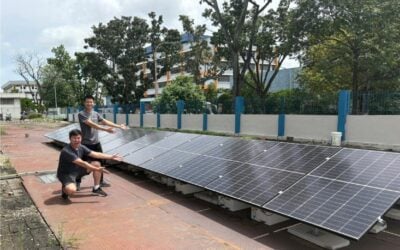
Commissioning has taken place of a 100MW/400MWh vanadium redox flow battery (VRFB) energy storage system in Dalian, China.
The biggest project of its type in the world today, the VRFB project’s planning, design and construction has taken six years. It was connected to the Dalian grid in late May, according to a report this week by the China Energy Storage Alliance (CNESA) industry group.
Enjoy 12 months of exclusive analysis
- Regular insight and analysis of the industry’s biggest developments
- In-depth interviews with the industry’s leading figures
- Annual digital subscription to the PV Tech Power journal
- Discounts on Solar Media’s portfolio of events, in-person and virtual
The system is in Dalian City’s Shahekou District, which is in Liaoning Province in northeastern China. It will contribute to lowering the peak load on the grid in Dalian City and could even play a role at provincial level, improving power supply and the capability to connect new generation sources like renewable energy to the grid.
VRFB developer and manufacturer Rongke Power supplied the battery technology. The company is a spin-off from the Dalian Institute of Chemical Physics of the Chinese Academy of Sciences and the institute has overseen the project through doctoral supervisor and head of its energy storage department Li Xianfeng.
Rongke Power had been cited to be working with US-headquartered flow battery technology company UniEnergy Technologies on the project previously, but that company’s Chapter 11 bankruptcy was widely reported late last year and even its website now appears to be offline.
An update on the project’s progress which was issued in June by the trade group Zhongguancun Energy Storage Industry Alliance from Beijing said the VRFB technology was developed by the Dalian Institute of Chemical Physics team.
Together, the academics have worked with Rongke Power on almost 40 commercial demonstration flow battery projects already, the alliance said, including projects both in China and overseas, such as a 10MW/50MWh system which was the world’s biggest when completed in 2013 and a 10MW/40MWh project at a wind farm.
Previously, the biggest flow battery installation in the world was a 15MW/60MWh system deployed in 2015 in northern Japan by Sumitomo Electric. Sumitomo Electric brought online a second, 51MWh large-scale system in April this year, which again would still rank among the world’s biggest for a technology which is regarded highly for its technical capabilities but has so far largely been unable to scale up.
However, the Dalian project is, as well as being a demonstration project and part of a wave of large-scale VRFBs China is looking to deploy, only at its first phase of construction. A second phase will bring it up to 200MW/800MWh.
Scale of China VRFB projects dwarf anything else in the world so far
It was the first project to be approved under a national programme to build large-scale flow battery demonstrations around China back in 2016 as the country’s government launched an energy storage policy strategy. It is thought that various factors including unexpected volatility in the price of vanadium and demand for the metal in other industries like construction had slowed the programme somewhat according to sources Energy-Storage.news had spoken to previously.
Elsewhere, in China’s Hubei Province, another (very) large-scale VRFB is being built in phases that was approved through the same programme. Canada-headquartered VRB Energy is constructing that 100MW/500MWh facility, with a ceremony held to signal the start of construction in August last year for an initial 100MWh phase.
VRB Energy and its local partners had already built a successful 3MW/12MWh demonstration project in Hubei and a VRFB factory with 1,000MWh annual production capacity could be built at the site at a later date too.
The Hubei project’s cost for 500MWh of VRFB, along with a combined 1GW of solar PV and wind generation from which it will charge, was cited as around US$1.44 billion.
The first phase of Rongke Power’s Dalian project meanwhile was given as RMB1.9 billion (US$298 million) in CNESA’s announcement, equivalent to RMB4.75/Wh (US$0.7/Wh).
Although not on the scale individually of either Chinese project, some megawatt-scale flow battery projects have been completed, announced or begun construction in recent months around the world.
In the UK, the world’s largest battery storage system to hybridise lithium-ion and vanadium flow went officially into commercial operation this summer, pairing 50MW/50MWh of lithium with a 2MW/5MWh VRFB system.
The flow battery company behind that project, Invinity Systems, is also supplying Australia’s first grid-scale flow battery storage, a 2MW/8MWh system co-located with a 6MWp solar PV plant in South Australia. Invinity will also supply a 2.8MW/8.4MWh battery storage system at a demonstration project in Alberta, Canada.
At the larger end of the scale, California non-profit energy supplier Central Coast Community Energy (CCCE) picked three VRFB projects as part of a procurement of resources to come online by 2026, ranging from 6MW/18MWh to 16MW/128MWh and totalling 226MWh.
One thing limiting the size and scale of flow batteries today is access to vanadium pentoxide, which is used in their electrolytes. While vanadium itself is abundant in both its raw primary form and as a secondary byproduct of steel production, not many facilities to process it into electrolyte exist.
This has led some flow battery companies like Austria’s CellCube and others to focus on the commercial and industrial (C&I) and microgrid segment of the energy storage market, at least for the time being.
Energy-Storage.news’ publisher Solar Media will host the 1st Energy Storage Summit Asia, 11-12 July 2023 in Singapore. The event will help give clarity on this nascent, yet quickly growing market, bringing together a community of credible independent generators, policymakers, banks, funds, off-takers and technology providers. For more information, go to the website.






